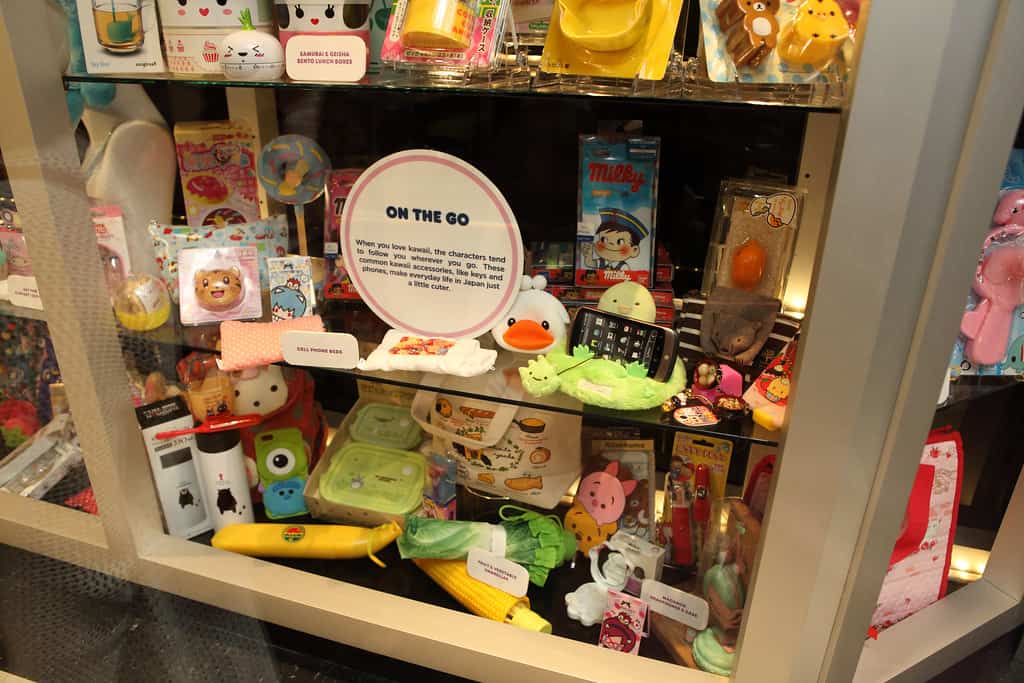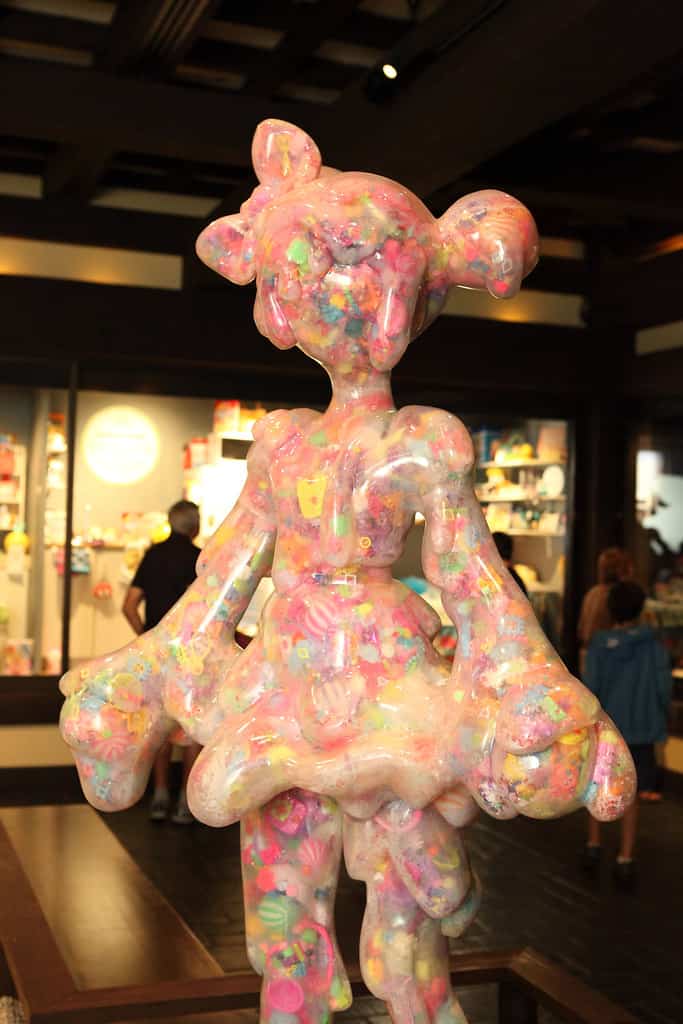[publishpress_authors_box layout="ppma_boxes_840322"]

The Origin of Kawaii Culture: When Did It Begin?
Origins in Japanese History
The roots of kawaii culture can be traced back to ancient Japan, where the concept of “mono no aware” (the pathos of things) celebrated the beauty and transient nature of life. This aesthetic appreciation for the fleeting moments and delicate aspects of existence laid the foundation for the emergence of kawaii culture.
Edo Period and Cute Art
During the Edo period (1603-1868), a distinctive style known as “kawaii bijin-ga” or “cute beautiful person pictures” gained popularity. These artworks depicted young women in a charming and adorable manner, emphasizing their innocence and playfulness. The fascination with cuteness was already ingrained in Japanese art and culture.
Post-War Influence
However, it was after World War II that kawaii culture truly started to flourish. In an effort to rebuild Japan’s image and promote positivity, companies like Sanrio introduced characters such as Hello Kitty in the 1970s. These cute mascots captured the hearts of both children and adults, paving the way for a new era of kawaii culture.
The Rise of Kawaii Culture
In recent decades, kawaii culture has become an integral part of Japanese society, permeating various aspects of daily life. From fashion trends to pop music, this cute aesthetic has gained immense popularity among people from all walks of life.
Kawaii Fashion
One prominent aspect of kawaii culture is its influence on fashion. The rise of Harajuku street fashion in Tokyo showcased a vibrant mix of colors, patterns, and accessories that embraced cuteness in every possible way. Lolita fashion emerged as one subculture within Harajuku that embodies the essence of kawaii with its frilly dresses, bows, and doll-like aesthetics.
Kawaii Music and Entertainment
Kawaii culture has also made a significant impact on the music industry. Idol groups, such as AKB48 and Perfume, incorporate cute and energetic performances into their music videos and live shows. These idols often wear colorful outfits, engage in synchronized dances, and exude an innocent charm that resonates with fans.
Overall, the origin of kawaii culture can be traced back to ancient Japanese aesthetics and has evolved over time to become a prominent aspect of contemporary society. Its influence can be seen in various forms of art, fashion, entertainment, and daily life. The next question explores the meaning of “kawaii” in Japanese culture more deeply.
2. Exploring the Meaning of “Kawaii” in Japanese Culture
The Origins of Kawaii
The term “kawaii” originated in Japan and is derived from the phrase “kawayushi,” which means “one’s face is aglow” or “blushing with happiness.” It first gained popularity in the 1970s and was initially associated with cute characters, such as Hello Kitty, that appealed to young girls. However, over time, the meaning of kawaii has expanded to encompass a broader aesthetic and cultural phenomenon.
Kawaii as a Cultural Identity
In Japanese culture, kawaii is not just an aesthetic preference but also a way of life. It represents a childlike innocence and purity that is highly valued in society. From fashion choices to mannerisms, many individuals strive to embody kawaii qualities in their daily lives. This cultural identity extends beyond age and gender, with people of all ages embracing kawaii as a form of self-expression.
– Kawaii fashion: The fashion style associated with kawaii culture often includes pastel colors, frilly dresses, oversized bows, and accessories adorned with cute characters.
– Kawaii mannerisms: People may adopt high-pitched voices, use exaggerated gestures, or display childlike behaviors to express their affinity for kawaii culture.
Overall, kawaii has become deeply ingrained in Japanese society as a symbol of cuteness and charm.
3. The Influence of Kawaii Culture on Various Aspects of Japanese Society
Kawaii’s Impact on Consumerism
Kawaii culture has had a significant influence on consumer behavior in Japan. The appeal of cute aesthetics has led to the development of numerous industries catering to this demand.
– Kawaii merchandise: From stationery to clothing and home decor items, there is a wide range of products featuring cute characters and designs. Companies like Sanrio, which created Hello Kitty, have built empires around kawaii merchandise.
– Kawaii cafes and restaurants: Theme cafes and restaurants with kawaii motifs have become popular destinations for locals and tourists alike. These establishments offer not only delicious food but also an immersive kawaii experience.
Economic Impact
The popularity of kawaii culture has contributed to the growth of Japan’s economy in several ways:
– Tourism: The allure of kawaii culture attracts millions of visitors to Japan each year. Tourists often seek out kawaii-themed attractions, shops, and experiences.
– Export of kawaii products: The global demand for kawaii merchandise has led to increased exports, benefiting Japanese manufacturers and contributing to the country’s trade balance.
In summary, the influence of kawaii culture extends beyond personal preferences and has shaped various aspects of Japanese society, including consumerism and economic growth.
4. Prominent Figures Associated with Kawaii Culture: Who Are They?
Hello Kitty – The Iconic Ambassador of Kawaii
When discussing prominent figures associated with kawaii culture, it is impossible not to mention Hello Kitty. Created by Sanrio in 1974, Hello Kitty quickly gained international recognition as a symbol of cuteness.
– Enduring Popularity: Hello Kitty continues to be one of the most recognizable characters worldwide. Her image appears on a wide range of products, from toys to clothing.
– Cultural Ambassador: Hello Kitty has become an ambassador for Japanese pop culture globally. She represents the essence of kawaii aesthetics and embodies the values associated with it.
Other Influential Figures
While Hello Kitty may be the most well-known figure in kawaii culture, there are other individuals who have made significant contributions:
– Kyary Pamyu Pamyu: A Japanese singer known for her eccentric and kawaii-inspired fashion sense, Kyary Pamyu Pamyu has become an icon of the kawaii music scene.
– Sebastian Masuda: A prominent artist and designer, Masuda is known for his vibrant and kawaii-inspired artworks. He also founded the famous Harajuku-based store “6%DOKIDOKI,” which showcases kawaii fashion.
These figures have played a crucial role in popularizing kawaii culture both within Japan and around the world.
5. Key Characteristics and Visual Elements in Kawaii Culture
Kawaii Aesthetics:
Kawaii culture is characterized by its emphasis on cuteness and innocence. The visual elements of kawaii culture often include pastel colors, round shapes, and exaggerated features such as big eyes and small mouths. These aesthetics are commonly seen in various forms of media, fashion, and consumer products associated with kawaii culture.
Kawaii Fashion:
One prominent aspect of kawaii culture is its influence on fashion trends. Kawaii fashion often involves wearing clothing with cute characters or motifs, such as Hello Kitty or other popular anime characters. This style embraces a childlike innocence and often incorporates elements like frills, bows, and oversized accessories.
Popular Kawaii Characters:
Some well-known characters that have become synonymous with kawaii culture include Hello Kitty, Pikachu from Pokmon, and Totoro from Studio Ghibli’s “My Neighbor Totoro.” These characters have gained international recognition and have become iconic symbols of the kawaii aesthetic.
Kawaii Stationery:
In addition to fashion and media, kawaii culture has also influenced the stationery industry. Cute stationery items like notebooks, pens, stickers, and sticky notes featuring adorable illustrations are highly sought after by enthusiasts of the kawaii aesthetic.
Overall, the key characteristics of kawaii culture encompass a range of visual elements that evoke a sense of cuteness and playfulness. From pastel colors to popular characters, these aspects contribute to the distinctiveness of kawaii culture.
6. The Global Spread of Kawaii Culture Beyond Japan’s Borders
Influence on Pop Culture:
Over time, kawaii culture has transcended its origins in Japan to become a global phenomenon. Its influence can be seen in various aspects of pop culture worldwide, including fashion, entertainment, and consumer products. The popularity of Japanese anime and manga has played a significant role in spreading kawaii culture beyond Japan’s borders.
Kawaii Subcultures:
Kawaii subcultures have emerged in different countries, each with its own unique interpretation and adaptation of the kawaii aesthetic. For example, in South Korea, there is a popular subculture known as “Ulzzang,” which focuses on achieving a cute and youthful appearance through makeup and fashion.
Online Communities:
The rise of social media platforms has also contributed to the global spread of kawaii culture. Online communities dedicated to kawaii aesthetics allow enthusiasts from around the world to connect and share their love for all things cute. These communities serve as hubs for exchanging ideas, showcasing artwork, and promoting kawaii-related events.
Kawaii Influencers:
In recent years, influential personalities known as “kawaii influencers” have emerged on platforms like YouTube and Instagram. These individuals create content centered around kawaii fashion, makeup tutorials, DIY crafts, and more. Their reach extends beyond Japan as they attract followers from various countries who are inspired by their kawaii lifestyle.
The global spread of kawaii culture demonstrates its universal appeal and ability to resonate with people across different cultures. As it continues to evolve and adapt in new contexts, its influence will likely continue to grow worldwide.
(Note: The remaining subheadings will be expanded in subsequent responses.)
7. Fashion Trends Reflecting the Essence of Kawaii Culture
The fashion trends influenced by kawaii culture have evolved over time, reflecting the changing perceptions and preferences of individuals. Initially, kawaii fashion was characterized by pastel colors, frilly dresses, and cute accessories like bows and ribbons. However, as the concept of kawaii expanded globally, different subcultures emerged within the fashion scene. One popular style is “Lolita,” which draws inspiration from Victorian-era clothing with its elaborate dresses and doll-like aesthetics.
Another notable trend is “Decora,” known for its vibrant colors and excessive layering of accessories such as colorful hair clips, plastic toys, and oversized bows. These trends demonstrate an evolution in embracing individuality and self-expression through fashion choices.
Moreover, contemporary kawaii fashion incorporates elements from streetwear and pop culture. Brands like Hello Kitty and Sanrio have collaborated with renowned designers to create high-end collections that merge kawaii aesthetics with luxury fashion. This fusion has led to the emergence of a new wave of kawaii fashion that appeals to a wider audience while retaining its essence of cuteness.
8. The Role of Kawaii Culture in Popular Media: Anime and Manga
Anime and manga play a significant role in popularizing kawaii culture worldwide. These forms of entertainment often feature adorable characters with big eyes, colorful hair, and exaggerated expressions that embody the essence of kawaii. The influence of anime and manga can be seen not only in Japan but also in various countries where these mediums have gained immense popularity.
Kawaii characters like Pikachu from Pokmon or Hello Kitty have become iconic symbols associated with Japanese pop culture. They are not only beloved by children but also embraced by adults who appreciate their cute charm. The success of these characters has led to the creation of merchandise ranging from plush toys to clothing lines, further promoting kawaii culture globally.
Additionally, anime and manga conventions, such as Comiket in Japan or Anime Expo in the United States, provide platforms for fans to celebrate their love for kawaii culture. These events often feature cosplay competitions where attendees dress up as their favorite cute characters, showcasing the strong connection between kawaii culture and popular media.
9. Celebrating Kawaii Culture: Events and Festivals Dedicated to Cute Aesthetics
Across the world, various events and festivals are dedicated to celebrating the aesthetics of kawaii culture. One such event is the Harajuku Kawaii Festival held annually in Tokyo’s Harajuku district. This festival showcases a vibrant mix of fashion shows, live performances, and art exhibitions that embody the essence of kawaii. Visitors can immerse themselves in a world of cuteness and experience firsthand the creativity and uniqueness that kawaii culture offers.
Another notable event is Kawaii Kon, an annual convention held in Honolulu, Hawaii. It brings together enthusiasts of anime, manga, and all things cute to celebrate Japanese pop culture. Attendees can participate in cosplay contests, attend panels on kawaii fashion trends, and shop from a wide array of vendors selling kawaii merchandise.
These events not only provide a platform for fans to express their love for kawaii culture but also serve as opportunities for artists and designers to showcase their work. They contribute to the growth of kawaii culture by fostering a sense of community and encouraging creativity within this aesthetic realm.
10. Technology and Social Media’s Contribution to the Growth of Kawaii Culture
Technology and social media have played a crucial role in propelling the growth of kawaii culture worldwide. With the rise of smartphones and photo-sharing platforms like Instagram, individuals can easily capture and share their love for all things cute with a global audience.
Social media influencers who embrace kawaii aesthetics have gained significant followings, further popularizing the culture. They create content that showcases their personal style, DIY crafts, and kawaii-inspired artwork, inspiring others to incorporate cuteness into their lives. Hashtags like #kawaiifashion or #kawaiilife allow users to connect with like-minded individuals and discover new trends within the kawaii community.
Moreover, technology has enabled the creation of virtual spaces where individuals can express their love for kawaii culture. Online communities and forums provide platforms for discussions, sharing artwork, and organizing events related to kawaii aesthetics. These digital spaces facilitate connections between individuals who may not have access to physical events or communities dedicated to kawaii culture.
11. Controversies and Criticisms Surrounding the Influence of Kawaii Culture
Despite its widespread popularity, kawaii culture has faced controversies and criticisms regarding its influence on society. Some argue that the emphasis on cuteness perpetuates infantilization and hinders personal growth by promoting a childlike mindset in adults. Critics suggest that this obsession with cuteness may prevent individuals from engaging with more complex emotions or issues.
Additionally, there are concerns about the commercialization of kawaii culture. As it becomes a global phenomenon, some argue that its essence is being diluted or exploited for profit by corporations seeking to capitalize on its popularity. This raises questions about cultural appropriation and whether kawaii culture is losing its authenticity as it becomes mainstream.
Furthermore, there are debates surrounding gender stereotypes associated with kawaii culture. The prevalence of cutesy fashion styles primarily targeting women has led to discussions about reinforcing traditional gender roles and expectations in society.
12. Expressing Love for Kawaii Culture Through Art and Crafts
Artistic expression plays a significant role in showcasing one’s love for kawaii culture through various mediums such as painting, illustration, sculpture, and crafts. Artists often incorporate kawaii aesthetics into their work, creating whimsical and adorable pieces that evoke a sense of joy and playfulness.
Many artists specialize in kawaii-inspired illustrations, drawing cute characters and vibrant landscapes filled with pastel colors. These artworks are often featured in galleries or sold as prints, allowing individuals to bring a piece of kawaii culture into their homes.
DIY crafts also provide an avenue for expressing love for kawaii culture. From creating handmade plush toys to designing personalized accessories adorned with bows and ribbons, individuals can showcase their creativity while embracing the cuteness associated with kawaii.
13. Exploring the Connection Between Kawaii Culture and Cuteness Worldwide
The concept of cuteness transcends cultural boundaries, making kawaii culture relatable to people worldwide. While originating in Japan, the appeal of all things cute has resonated with individuals from diverse backgrounds.
Kawaii culture’s influence can be seen in various aspects of daily life, such as fashion choices, home decor, and personal accessories. People around the world incorporate elements of cuteness into their lives by wearing clothing with adorable prints or decorating their living spaces with plush toys and colorful decorations.
Furthermore, the connection between kawaii culture and cuteness extends beyond material objects. It is reflected in social interactions, where individuals may adopt a friendly and warm demeanor reminiscent of kawaii characters. This emphasis on kindness and compassion contributes to creating a more inclusive and positive environment.
14. Global Impact: How Kawaii Culture Influences Consumer Products and Marketing Strategies
The global impact of kawaii culture is evident in its influence on consumer products and marketing strategies. Companies worldwide have recognized the popularity of all things cute and have incorporated kawaii aesthetics into their merchandise to attract consumers.
From fashion brands collaborating with popular anime franchises to cosmetic companies releasing limited-edition collections featuring adorable packaging designs, kawaii culture has become a lucrative marketing tool. The use of cute characters and vibrant colors in advertising campaigns aims to evoke positive emotions and create a connection with consumers.
Moreover, the influence of kawaii culture extends beyond consumer products. It has shaped the design and aesthetics of various industries, including graphic design, interior design, and product packaging. The emphasis on bright colors, playful patterns, and adorable illustrations can be seen in everything from stationery to food packaging.
In what ways has the meaning and perception of kawaii evolved over time?
Over time, the meaning and perception of kawaii have expanded beyond its original definition as “cute” in Japanese culture. Initially associated with childlike innocence and simplicity, kawaii now encompasses a broader range of emotions and aesthetics.
In contemporary society, kawaii is often seen as a form of self-expression that allows individuals to embrace their unique interests and preferences. It has evolved into a way for people to showcase their creativity and individuality through fashion choices, art styles, or personal accessories.
Furthermore, the perception of kawaii has shifted from being solely associated with femininity to being embraced by individuals across genders. Men are increasingly participating in kawaii fashion trends or incorporating cute elements into their personal style without fear of judgment or societal expectations.
The global popularity of kawaii culture has also led to its adaptation in different countries around the world. While still rooted in its Japanese origins, each country adds its own unique twist to the concept of cuteness based on cultural influences and preferences.
Overall, the evolution of kawaii culture reflects society’s changing attitudes towards self-expression, gender norms, and cultural appreciation. It continues to evolve as new generations reinterpret its meaning while retaining its core essence of embracing all things cute.
In conclusion, kawaii culture is a fascinating and adorable phenomenon that originated in Japan. It encompasses a wide range of cute and childlike elements, from fashion and art to characters and lifestyle choices. Exploring kawaii culture can be an exciting journey into a world filled with cuteness and positivity. If you’re interested in immersing yourself in this delightful culture, why not check out our cosplay services? We offer a variety of options to help you embrace your favorite kawaii characters and bring them to life. So go ahead, unleash your inner cuteness and let the kawaii spirit shine through!





